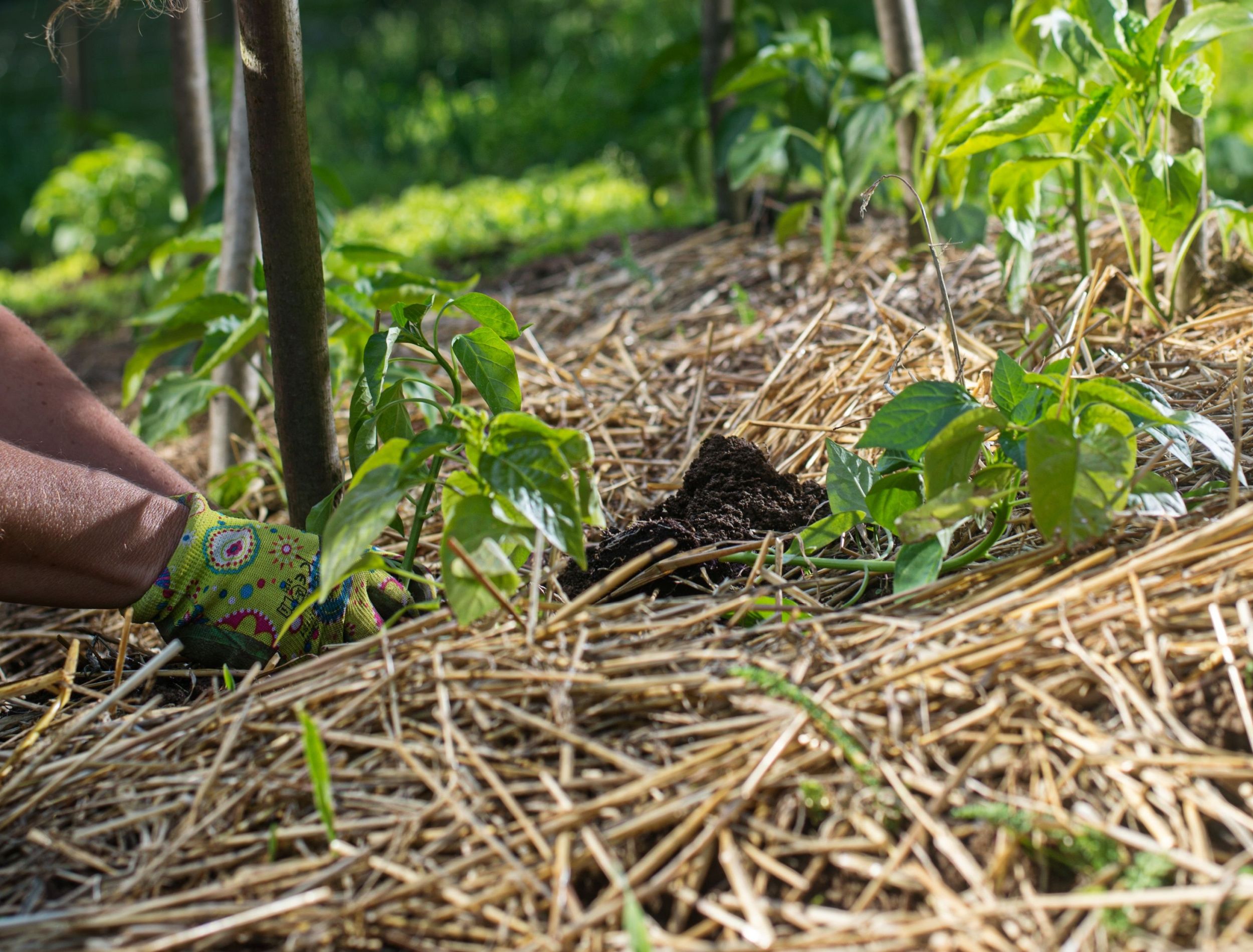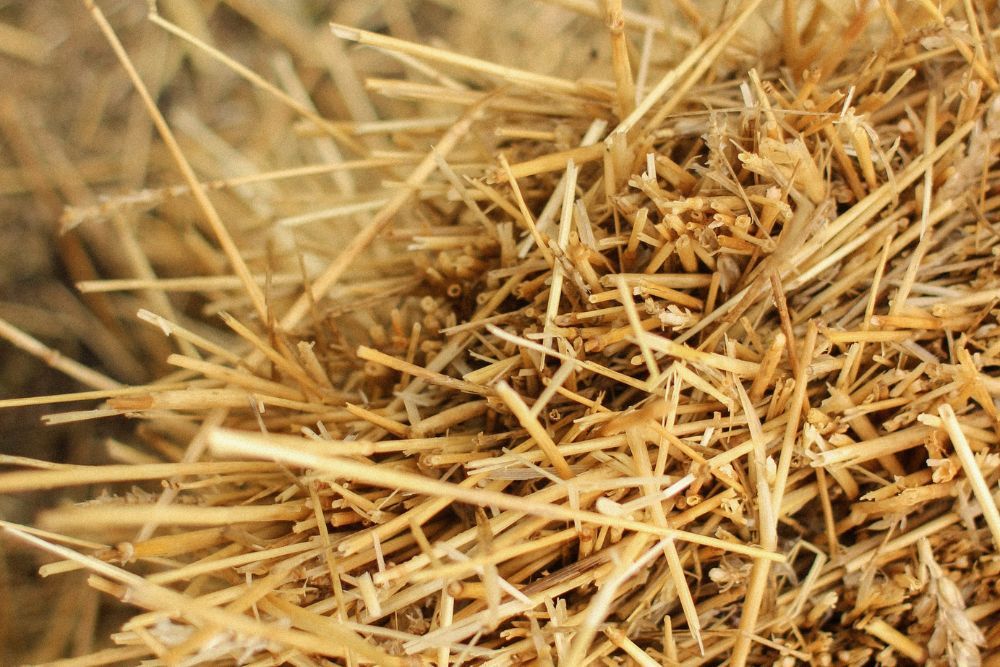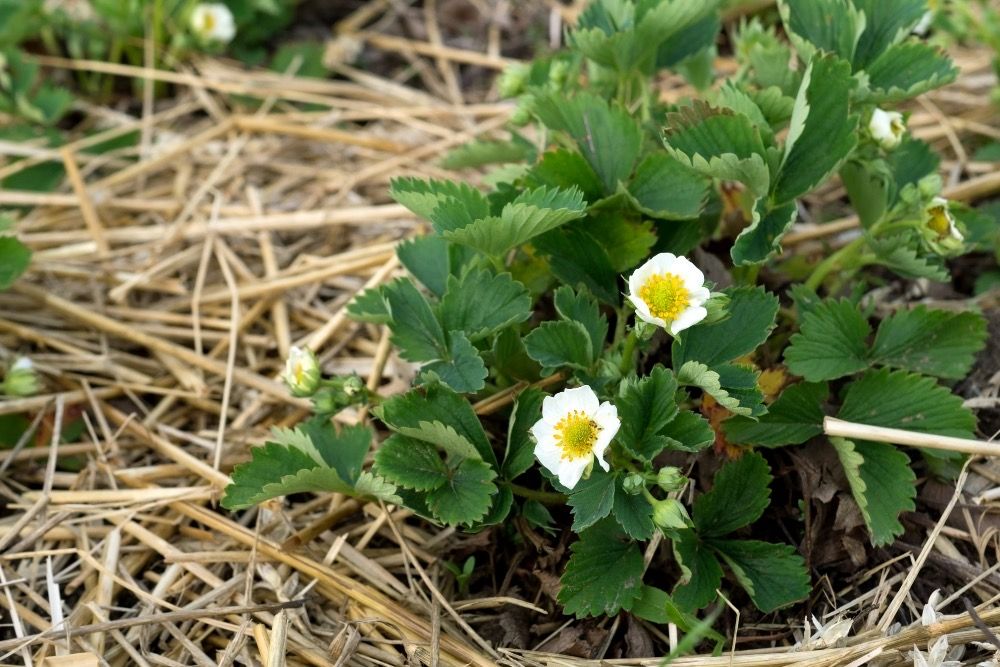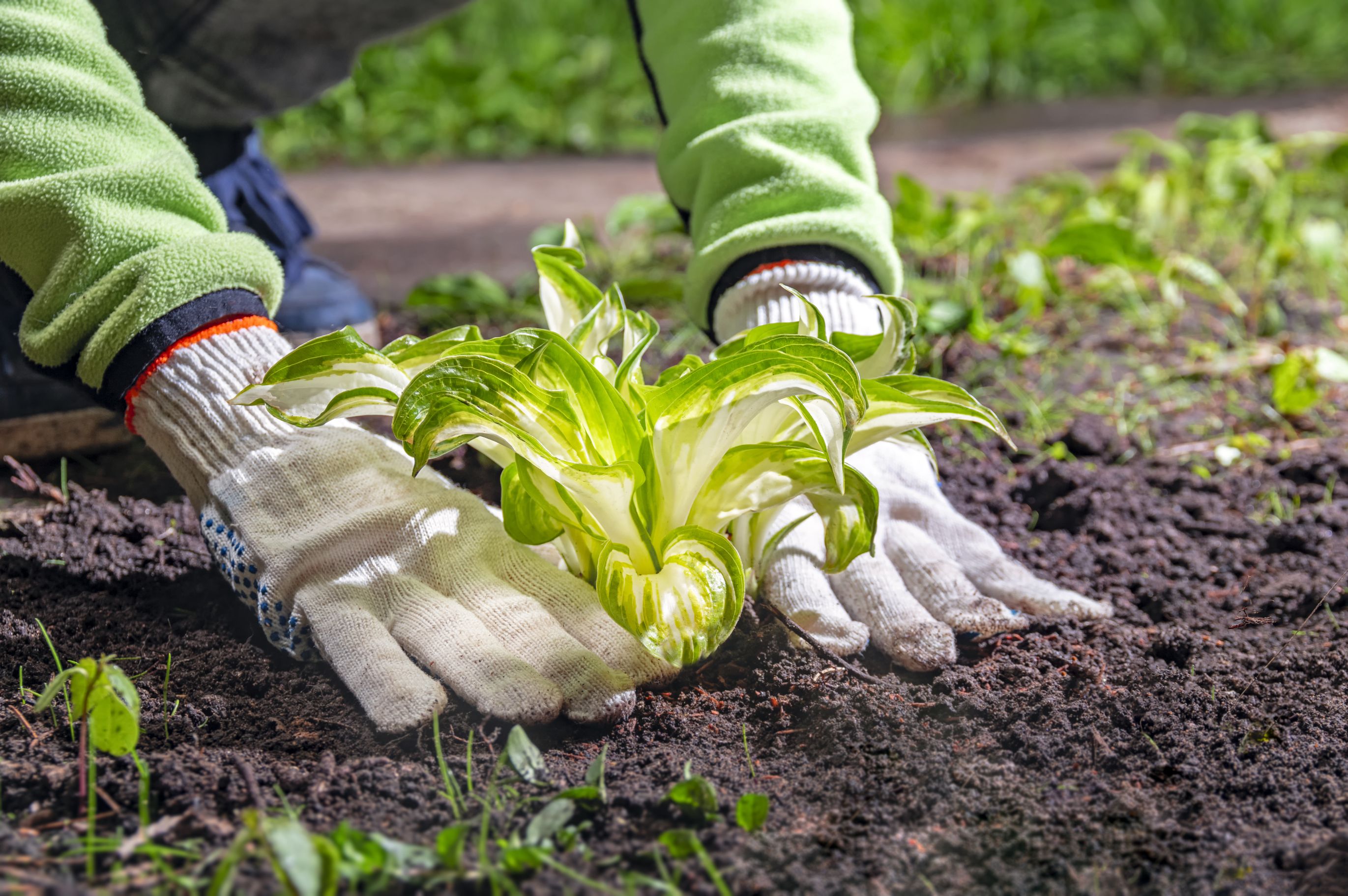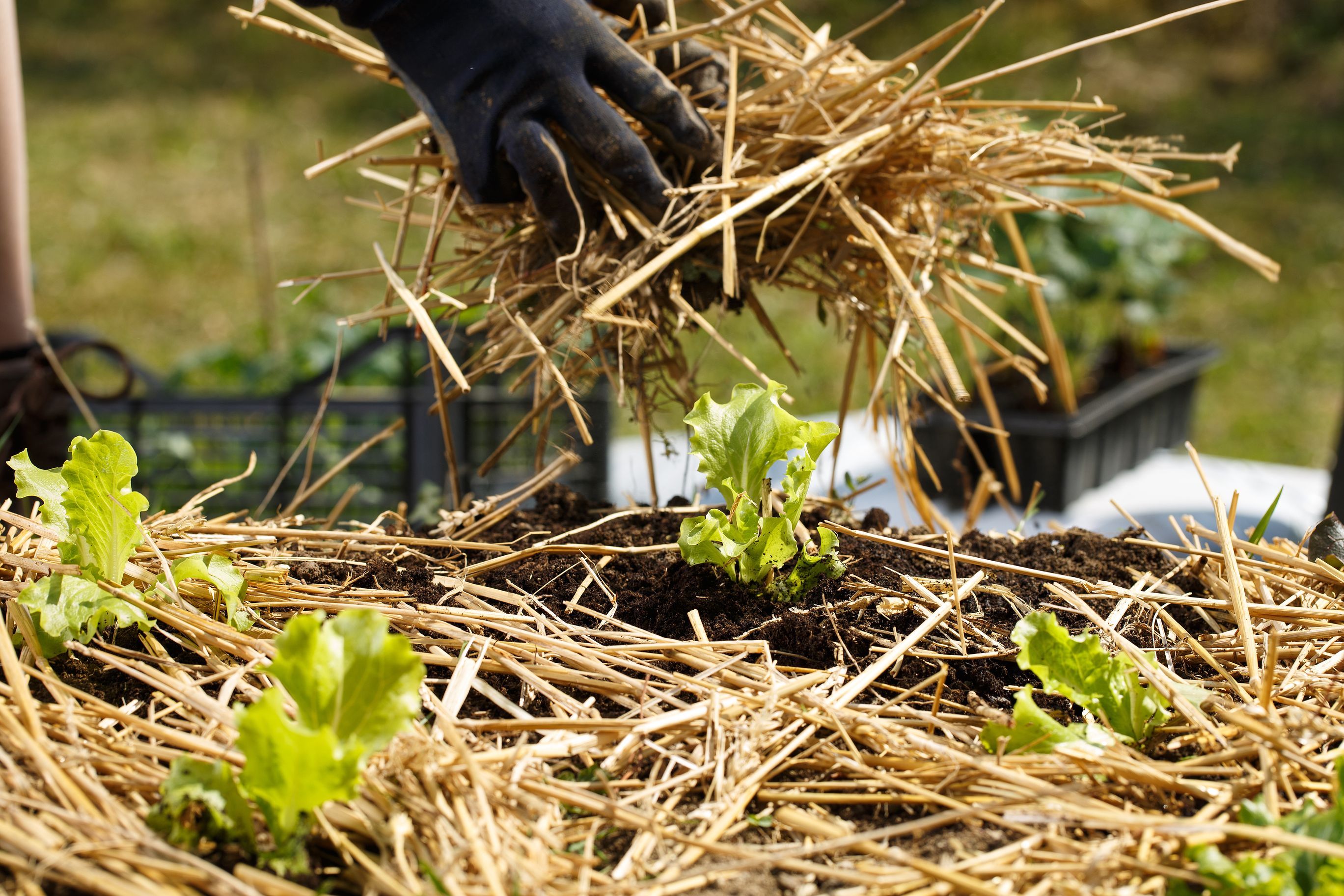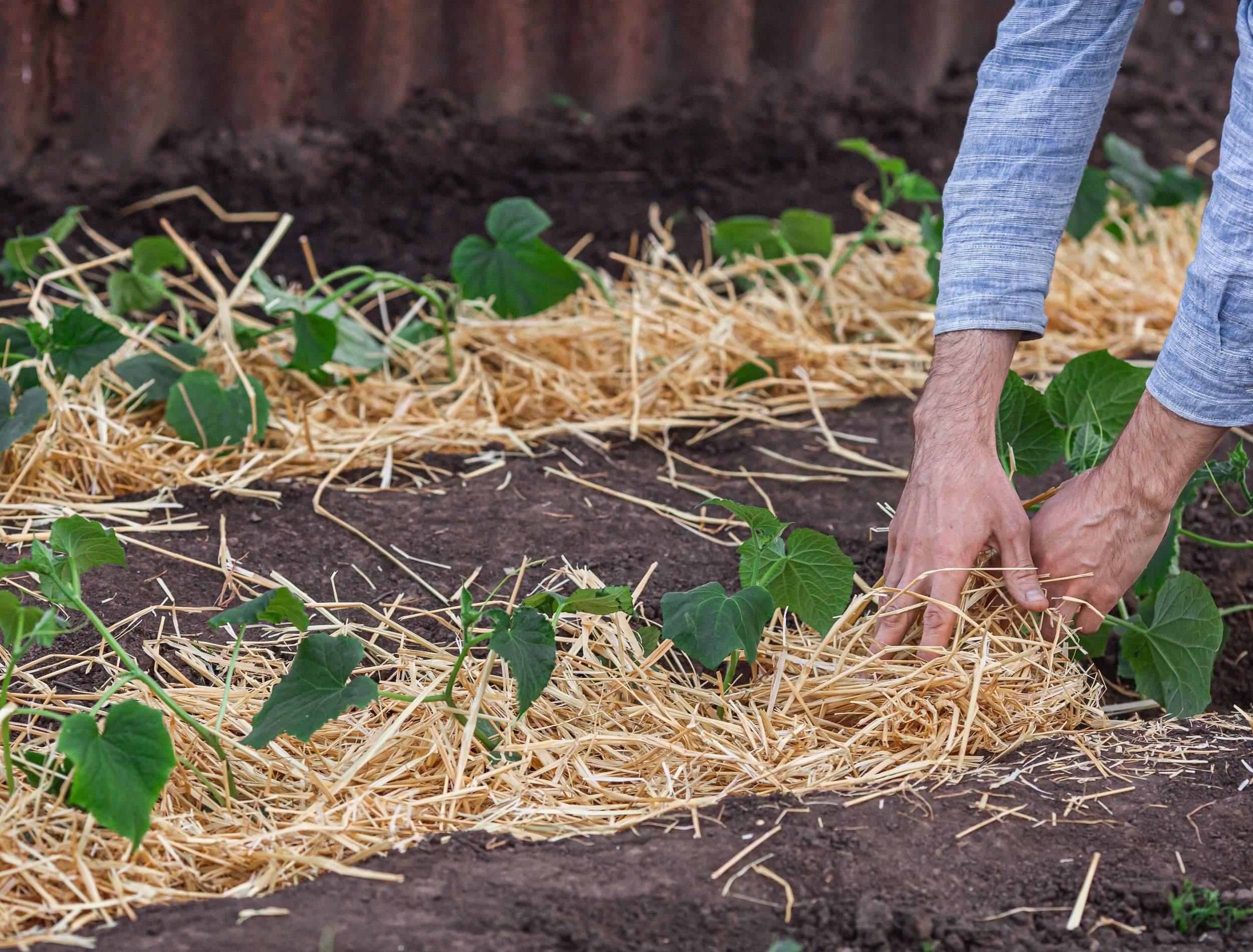Key Takeaways
- Mulching with straw provides several benefits for your vegetable garden, including moisture regulation, weed prevention, and healthier soil.
- Straw acts as a barrier against the sun, slowing down evaporation and keeping the soil moist for longer, reducing the need for watering by 50 percent.
- In addition to its benefits, straw mulch breaks down over time, adding organic material to the soil, acting as a natural fertilizer and saving you time and money.
Straw is a popular and beneficial tool in the garden, acting as a soil amendment, as well as protecting seedlings and preventing soil erosion. The affordable and versatile product also bodes well as mulch, boasting several benefits for the health of vegetable plants and the soil in which they grow.
Discover all the benefits of using straw as mulch in your vegetable garden, ranging from controlling weeds to maintaining moisture, as well as the step-by-step directions to applying (and reusing) the mulch.
Tools You'll Need
The essentials for mulching with straw
There are only a few essential tools for mulching with straw.
- Weed-free straw
- Rake
- Gardening gloves
Benefits of Mulching With Straw
Moisture regulation, fewer weeds, and healthy soil
There are several benefits of mulching with straw, including moisture regulation, fewer weeds, and healthier soil.
- Straw mulch acts as a form of drainage and prevents soil compaction, meaning your plants won't be easily overwatered. It also acts as a barrier between the ground and the hot sun, slowing the process of evaporation. The soil will stay moist for longer, cutting down the need to water your plants by around 50 percent.
- Since straw is a barrier between the soil and the light, it also prevents weeds from germinating and breaking through the layer of straw.
- Straw is a protective layer, regulating soil temperature. Maintaining soil temperatures protects the roots during cooler and warmer periods, extending the plant's growth period. For example, laying mulch over strawberry plants while they are dormant ensures the crowns do not suffer as the weather reaches freezing temperatures.
- It allows microorganisms and beneficial bugs to thrive, further benefiting the plant.
- Acting as a natural fertilizer, it will build the soil mass and simultaneously release nutrients such as nitrogen, phosphorus, and potassium, saving you time and money as it breaks down.
Step 1: Knowing When to Lay Mulch
Determine if your plants are ready for mulch
Before laying the straw mulch, it is important to determine if your plot is ready. Laying straw mulch over seedlings would have the same effect as it does on weeds: it prevents germination. Allow your plants to develop a sturdy stem that is 2 to 3 inches tall before you lay the mulch.
There are two key details to consider when choosing the correct straw for your garden:
- Choose straw that is weed-free (it should be marked as such) to ensure no weeds grow from the mulch itself.
- Look for straw that is not treated with herbicides that you might want to avoid growing with your vegetables.
Weed your garden as you wait for your plants to develop. Laying mulch around established plants is beneficial to the plant, so it is important to remove any that you don't want growing in the area.
Step 2: Apply the Mulch
Lay 3-inches of straw
Once your plants are ready, it is time to add the straw mulch.
- Consider applying six or seven layers of newspaper before applying the layer of straw. Newspaper is similar to straw, adding nutrients to the soil as it breaks down, protecting plants from frost, and preventing weeds from growing.
- If the straw is compacted, separate it, so it is easier to distribute and not compacted.
- Apply 5 inches of straw mulch, about 1 inch away from the stem of each plant. Leaving space around the plant allows air and moisture to flow around the stem and roots, decreasing the changes of disease.
Once the winter approaches, you can also layer straw over the stems of your plants, such as strawberries, to protect them during the cold months.
Step 3: Recycle or Reuse the Mulch
Remove mulch in spring and reuse it in your garden
The straw will decompose over several months, and you may need to reapply it if you intend to keep it on your crops throughout the year. If you are only using it as a protective layer for your plants throughout the winter, remove layers of straw in spring. Add the materials to your compost pile. Alternatively, rake the straw away from the tops of your plants and use it as mulch around the base of your plants.
Straw is the ideal mulch for your vegetable garden, being both affordable and accessible, as well as beneficial to the health of your plants and the soil. It helps maintain soil moisture, cutting the need for watering in half, and it also prevents weeds and adds nutrients to the soil as it breaks down.Do you know anyone whose garden may benefit from straw mulch? Share your knowledge to lend a helping hand!

